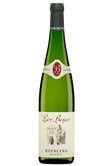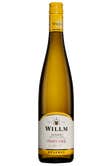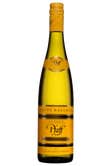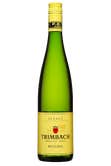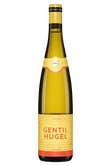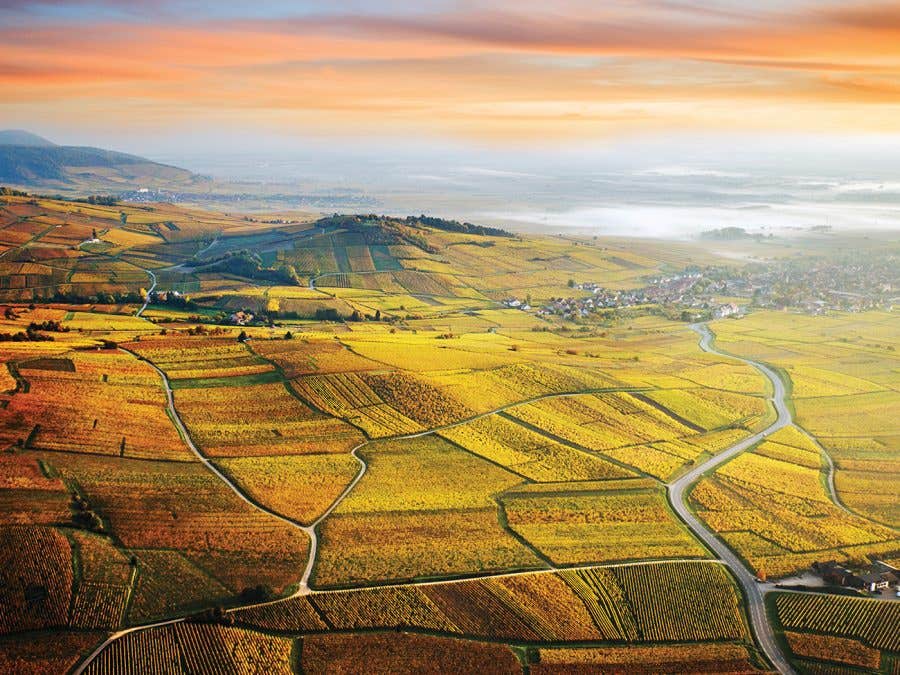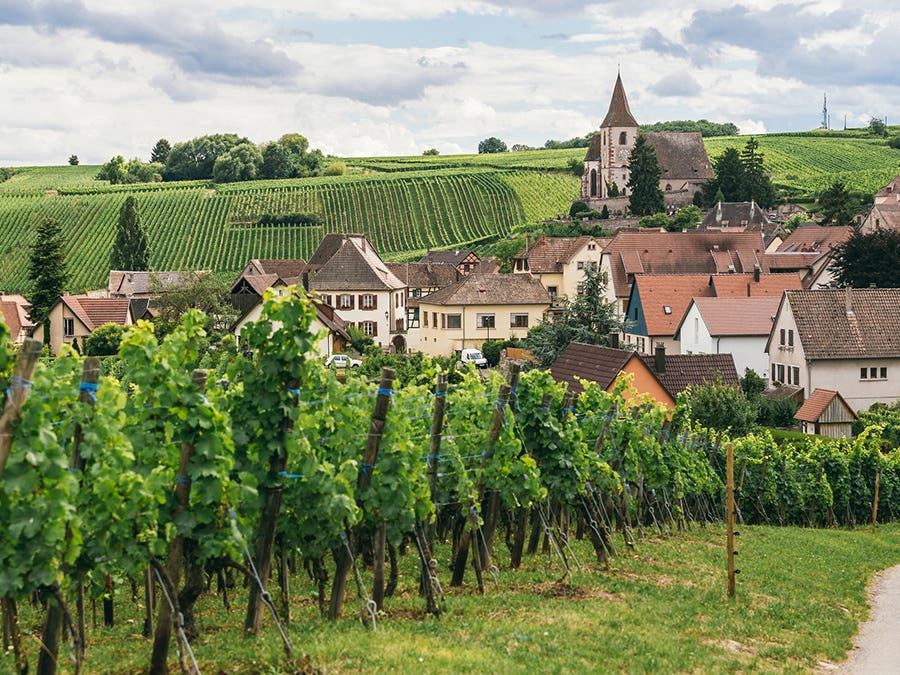The Alsatian vineyard has undergone various influences throughout history. Its position, at the crossroads of Romanic and Germanic cultures, is still palpable both in the local nomenclature and in its wine offer.
Alsace remains faithful to the valorisation of mono-varietal cuvées and to the great diversity of soils and microclimates. Producers are concerned with planting a wide range of grape varieties, clearly identifying the optimal conditions of expression for each of them.
Alsace wines have in common a great aromatic character and a remarkable freshness.


SHORT GUIDE TO ALSATIAN WINES
Riesling
Its aromas of great refinement are marked by fruity (lemongrass, grapefruit, pear, peach), floral and aniseed notes. Depending on its terroir of origin, it can also reveal mineral notes. The Grands Crus allow it to express the complexity of its original soil. Thanks to their invigorating backbone, Alsatian Rieslings have a capacity to improve with time.
Pinot blanc
IIt offers discrete fruity aromas, led by pear and apple as well as floral nuances, supported by a measured acidity that makes it a tender and light wine.
Sylvaner
Its discreet fruity and floral fragrances evoke citrus fruits, white flowers and fresh herbs. Thanks to a nice freshness, it breathes youth and spring. This thirst-quenching side lends itself as well to the aperitif as to accompany shellfish and crustaceans.
Muscat
Its nose is dominated by lush notes of fruit and flowers. Behind this powerful nose, however, is a resolutely dry wine where the liveliness harmoniously complements the bright fruit character. It is an ideal wine to charm your guests at the aperitif or to celebrate a happy event!
Pinot gris
Its great aromatic complexity is dominated by aromas of apricot, honey and gingerbread. Its volume in mouth is supported by a nice tension which gives an additional length. It is precisely this balance, between freshness and roundness, which allows it to make wonderful agreements with white meats, poultry and gratins.
Gewurztraminer
Behind this complicated name lies a rich aromatic range from which emerge notes of exotic fruits (lychee, passion fruit, pineapple, mango) rose water and spices. The aromatic complexity of this wine is accompanied by a full and generous mouthfeel. This assertive character makes for wonderful pairings at the table, think spicy, bold and richly aromatic dishes.
Gentil
This term refers to a blend that must contain at least 50% of one of these grape varieties: Riesling, Muscat, Pinot Gris or Gewurztraminer. The other half of the blend can be composed of Sylvaner, Chasselas or Pinot Blanc. It is appreciated for its slightly aromatic character and its great freshness.
A vineyard with exceptional conditions
The Vosges Mountains act as a natural barrier that protects the Alsace territory and contributes to regulate the temperature of its vineyards. Thanks to this situation, Alsace benefits from a sunny, warm and dry semi-continental climate. In Colmar, capital of the Alsatian vineyards, less than 550 mm of rain falls annually, which makes it the second driest wine region in France. The late season is characterized by warm days but cool nights that allow an optimal ripening of the grapes, a balance in the structure of the wines and the development of complex aromas.
Preservation of the terroir
The Alsatian vineyard is on a human scale and is shared between approximately 4,000 winegrowers, the majority of whom are small producers. The protection of this unique territory is therefore at the heart of the concerns of Alsatian wine growers. The cohabitation of the vines with nature must be harmonious and the care given to the vines must enhance the freshness and the aromatic expression of the wines while ensuring the sustainability of the vineyard. This is why the Alsatian winegrowers are used to favouring the grassing of the plots of land, in order to limit erosion on the slopes. The high trellising allows to expose the vine to the sun and to limit the frost when the temperatures fall. We also aim to stimulate the natural defenses of the vine by promoting deep root development and limiting the use of inputs.
Organic farming, well rooted
Organic farming has been established for a long time in Alsace. Today, 5,440 hectares of vineyards are cultivated organically, representing more than 34% of the total area. It is one of the regions of France where the area under organic farming is the most important. This trend has increased in the last few years, the organic vineyard surface has quadrupled in the last ten years. It is also the pioneer in biodynamic viticulture, since the early sixties, and today the first wine region in the world to practice this type of viticulture.
The Grands Crus, a rigorous framework
Depending on the level of expression of the terroir, the different designation levels impose increasingly rigorous production rules. The Grands Crus recognize the territories that benefit from optimal production conditions according to their geology and their microclimate. In total, 51 Grands Crus are delimited according to these rigorous criteria and enable their identity to be clearly defined. If this regulatory framework dates from the 20th century, the notion of Grands Crus has been established for a long time. As early as the 9th century, Alsatian winegrowers had already identified the specificities of certain "lieux dits". It is therefore based on a centuries-old know-how that the terroirs best suited to the cultivation of each grape variety have been recognized. It is not by chance that the most coveted plots are often on slopes, as this inclination allows for better exposure to the sun.
Authentic and versatile wines
This well-defined identity offers consumers authentic, easy-to-drink, dry and pleasant wines. Alsatian wines are varied, they bear the signature of each of the region's favorite grape varieties, but they have in common their vivacity and their captivating fragrance. This versatility lends itself perfectly to our drinking habits where wine can be served as an aperitif or as an accompaniment to appetizers or even a meal consisting of a variety of dishes to share. Behind these beautiful bottles are also winemakers who are proud of their region, attached to their heritage and concerned about implementing the best practices in the vineyard and in the cellar. It's hard to resist the charms of Alsace wines!
Here are seasonal pairings that highlight the diversity of the Alsatian vineyards.
Léon Beyer, AOC Alsace Riesling
Founded in 1867, this winery produces a range of classic wines that showcase the region's noble grape varieties. Here, Riesling delivers citrus aromas with floral and mineral notes that will pair with our salmon cream crostini. Perfect for entertaining guests or to start the meal.
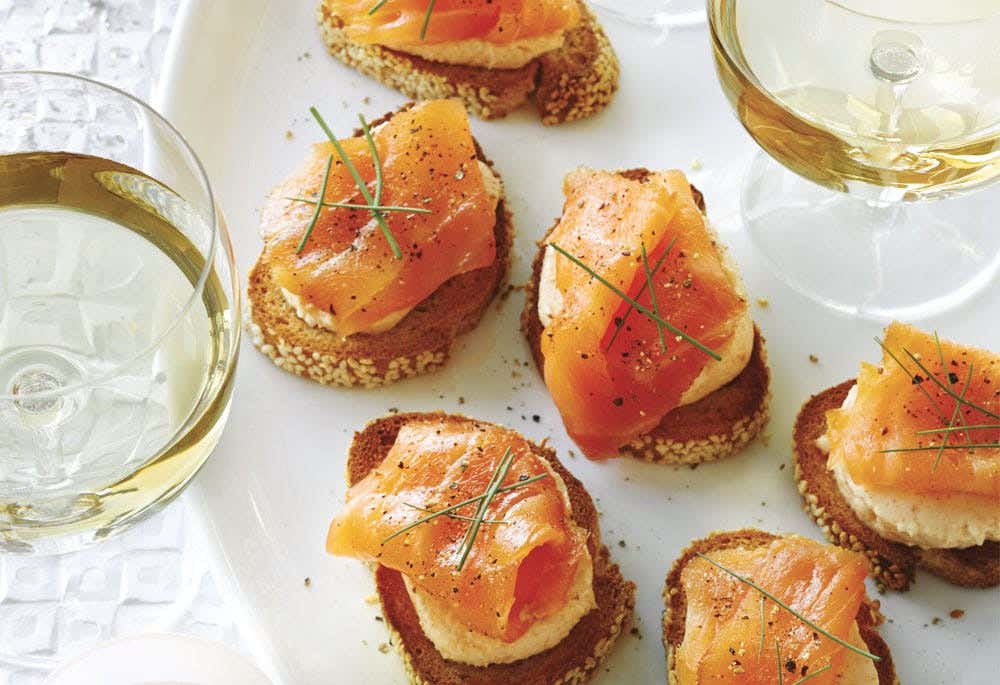

Willm, AOC Alsace Pinot Gris « Réserve »
Willm has been established in the Barr region for over 120 years. This cuvée has the characteristic structure of pinot gris which allows it to accompany this Quebec cheese fondue recipe. You will be charmed by its typical aromas of melon, honey and floral and spicy notes.
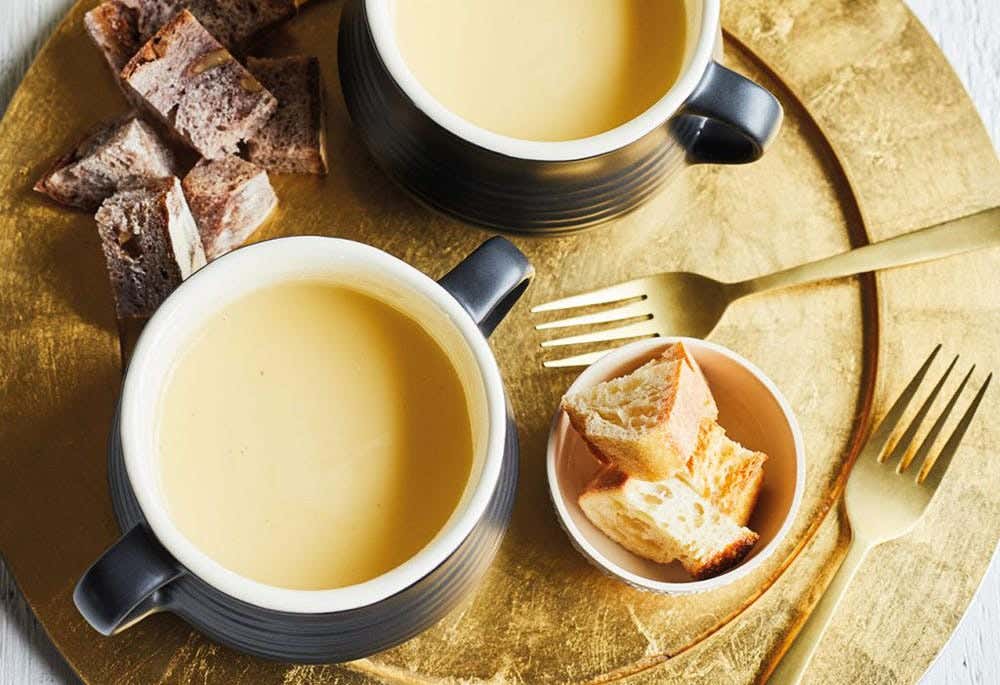

Pfaff, AOC Alsace Gewurztraminer « Cuvée Bacchus »
From one of the most important cooperative wineries in Alsace, this Bacchus vintage is the archetype of the Gewurztraminer from Alsace. With its exuberant notes of ginger, lychee, rose and candied lemon, its rich and silky body, it will delight lovers of expressive and mouth-filling wines. To celebrate apple season, serve it with these apple and ice cider pork skewers.
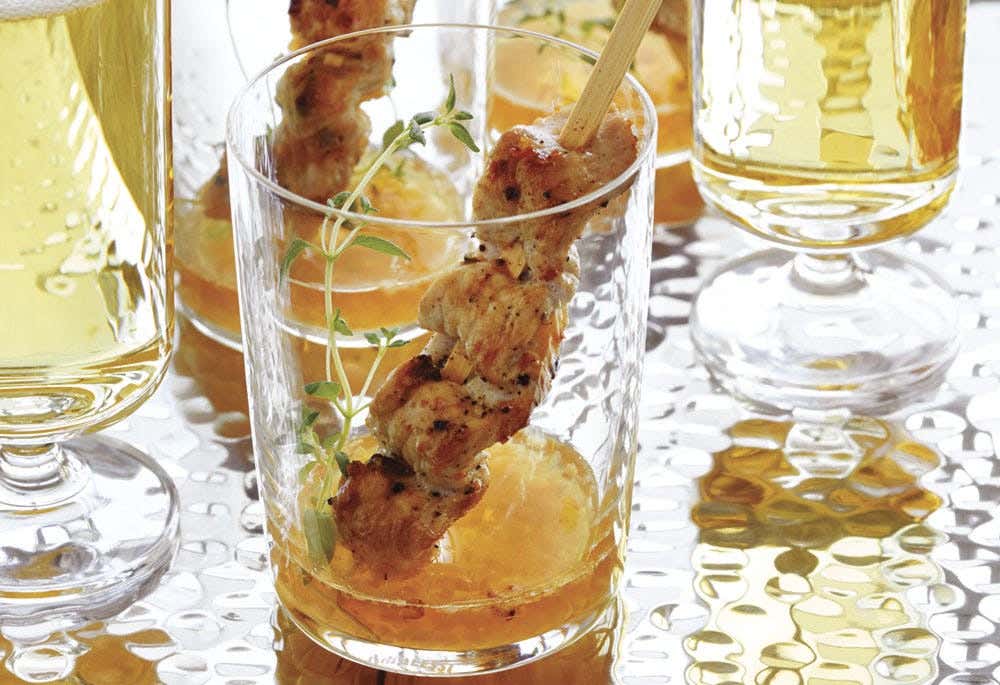

Trimbach, AOC Alsace Riesling
With the arrival of the months ending in “ber”, it's time to enjoy oysters! Serve them au gratin with Quebec cheese to bring out the lively style, citrus, peach and pine notes and great refinement of this Trimbach Riesling. This family estate has been producing authentic and distinguished wines for 13 generations.
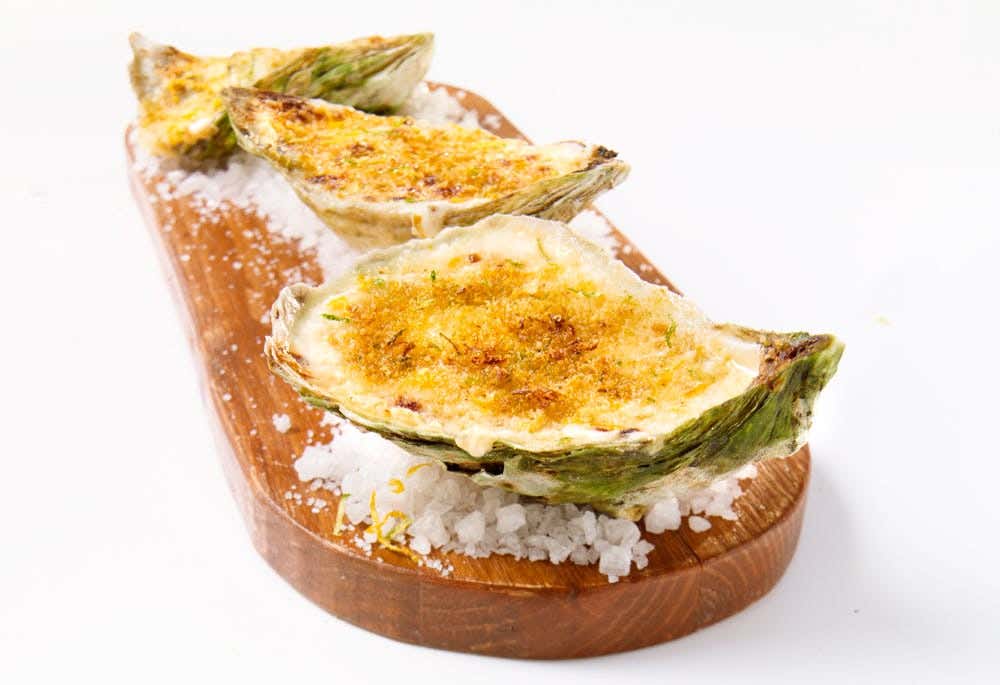

Calvet, AOC Alsace Pinot Blanc
For easy entertaining, give them this recipe that highlights seasonal ingredients. Apples and goat cheese take centre stage in our bite-sized croque-monsieur recipe. With its apple, pear and citrus flavours and lovely floral notes, this Pinot Blanc is the perfect companion for your no-fuss party.


Hugel, AOC Alsace Gentil
Established in Riquewhir since 1639, the Hugel family produces a wide range of wines that highlight the noble grape varieties of the region. The gentil is the only wine of the family in which the different grape varieties are blended. This wine, where the spicy side of the gewurztraminer mingles with the fruity aromas of the muscat, the body of the pinot gris and the finesse of the riesling, is an ideal companion for this comforting dish of escargot pastry.
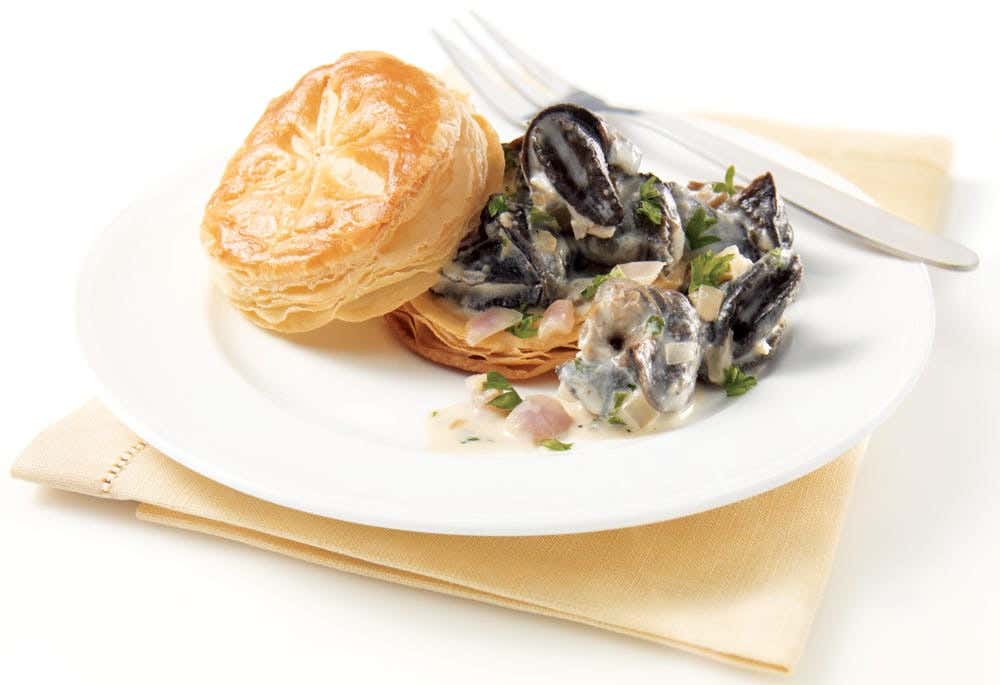

In partnership with Vins d’Alsace
To read more on the subject:
-
Read more
White wine is popular in Quebec again, and how fortunate for Alsace — it’s their speciality. With an age-old winemaking tradition, the region proposes an exceptional offering of grapes that spring forth from a dizzying variety of terroirs.
-
Read more
Alsatian wine is known for its complex yet favourable geology. Here’s a guide to deciphering and savouring the region.
-
Read more
Pinot Blanc or Gris, Riesling, Cremants: adaptable wines to discover!
 Access to SAQ Inspire personalized services and store inventories are unavailable at the moment.
Access to SAQ Inspire personalized services and store inventories are unavailable at the moment. Free in-store delivery with purchases of $75+ in an estimated 3 to 5 business days.
Free in-store delivery with purchases of $75+ in an estimated 3 to 5 business days. 


